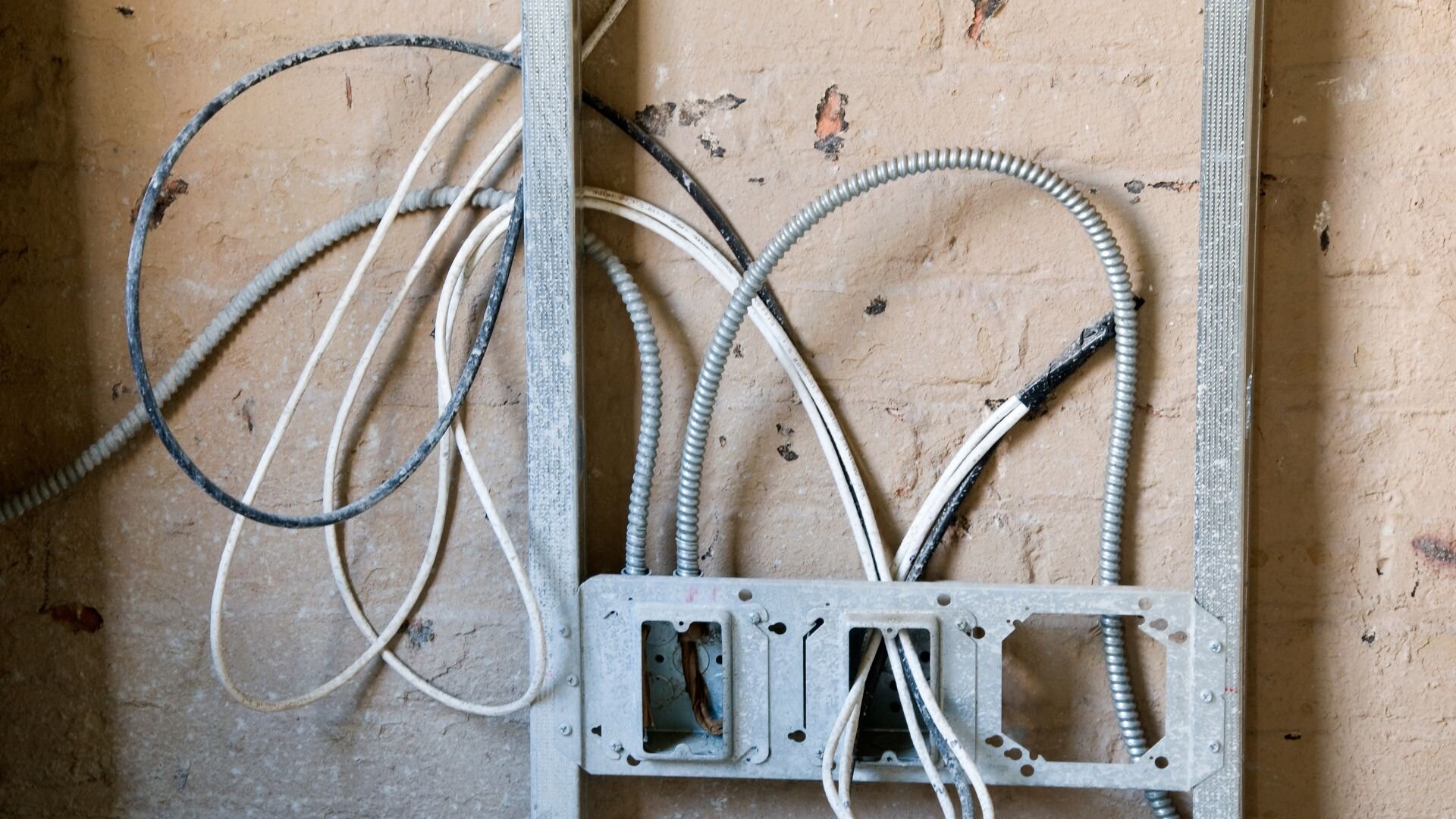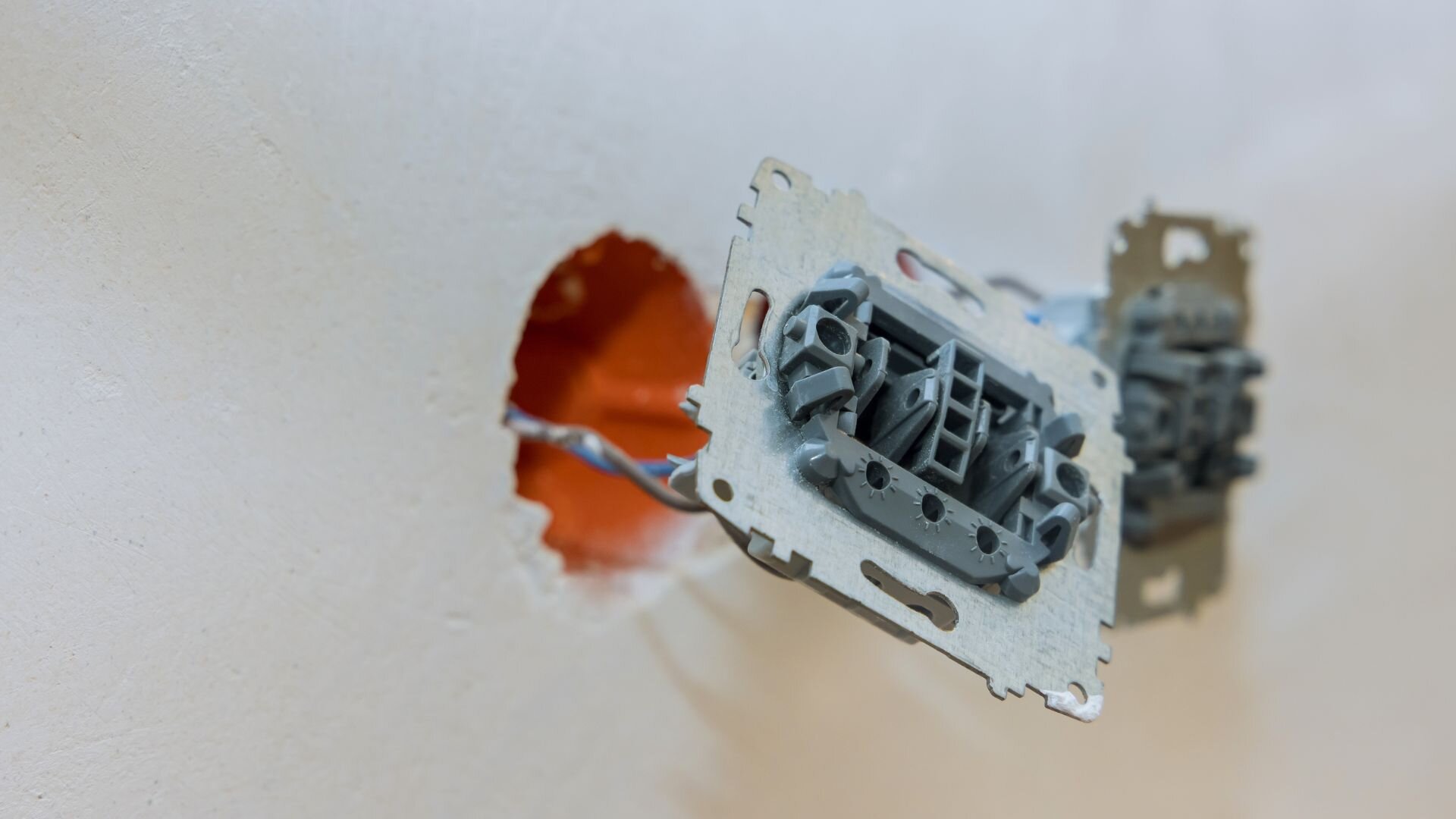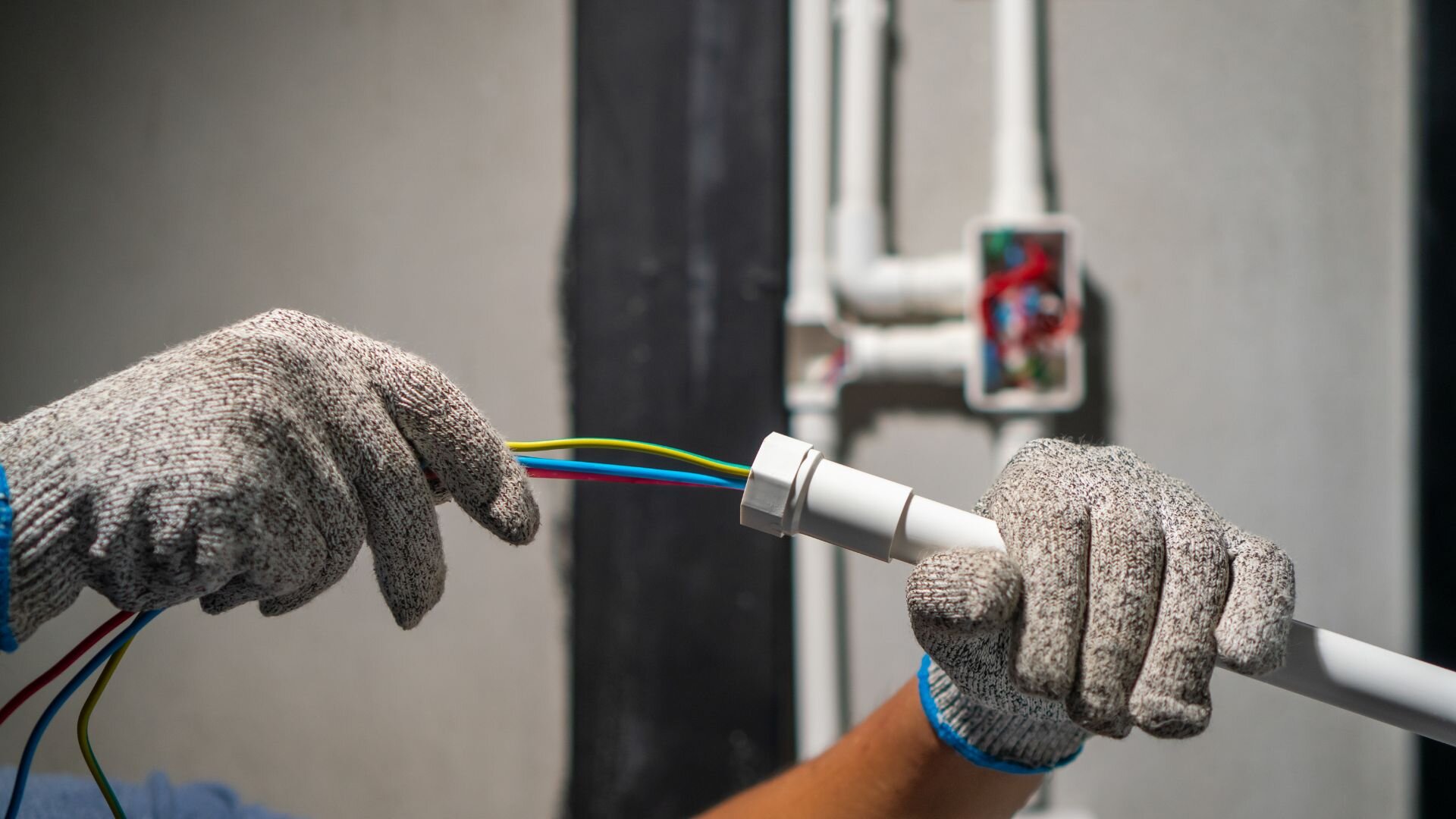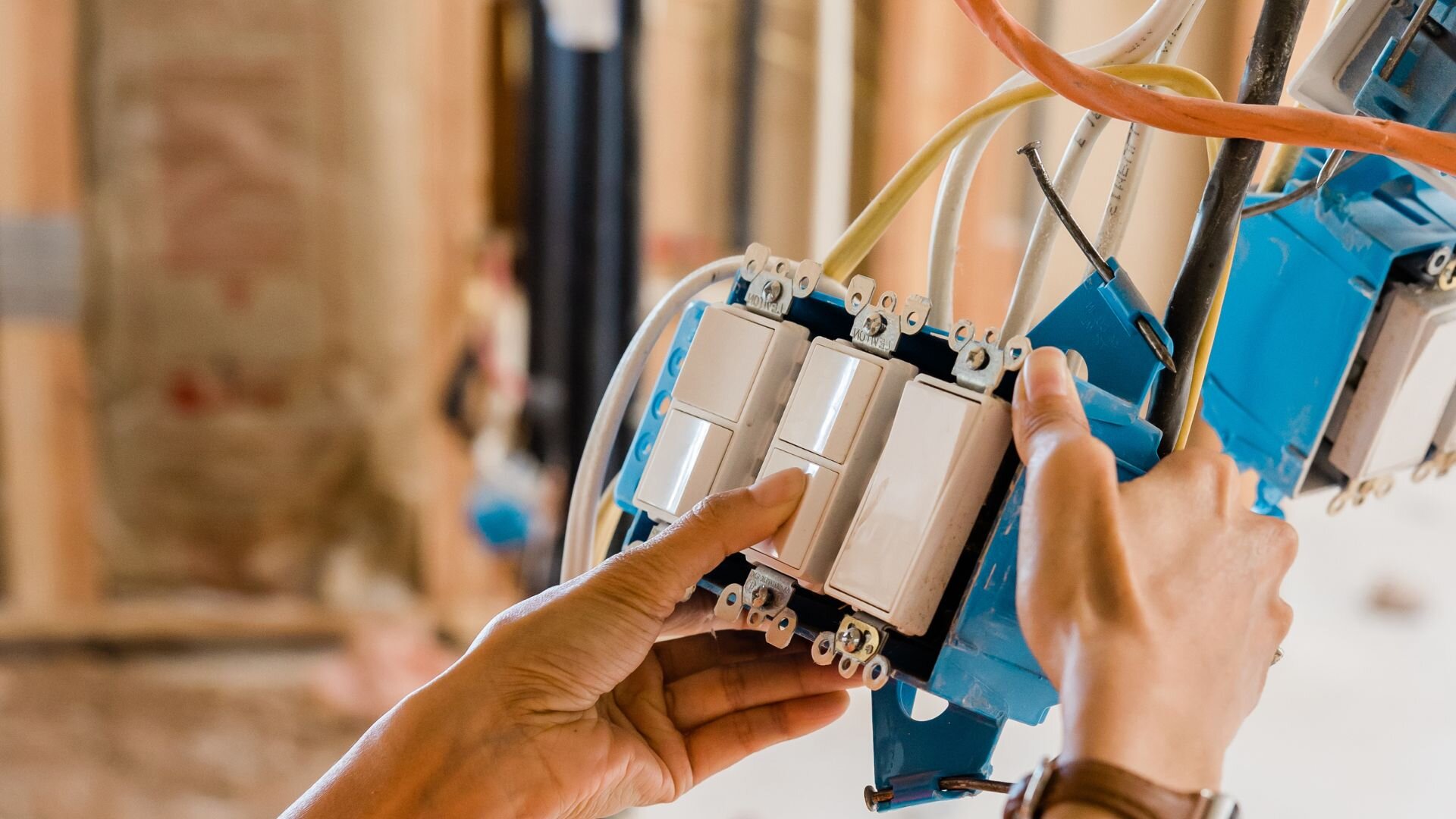Australia is undeniably a renovation-obsessed country. Recent figures from the Australian Bureau of Statistics paint a vivid picture of this obsession: a staggering $1 billion was poured into home alterations and additions in just December last year! And that’s just one month’s snapshot of a year that saw a total renovation spend exceeding $12.4 billion.
Amidst this renovation frenzy, the bathroom often emerges as a focal point. While tiles, fixtures, and layouts command attention, the electrical infrastructure underlying these transformations is equally crucial. From ensuring safety to maximising functionality, the electrical aspect of a bathroom renovation is a complex puzzle that, when solved correctly, can elevate a space from ordinary to extraordinary.
Let’s delve into the intricacies and rewards of a well-executed bathroom electrical renovation.
Let’s Start With The Basics

Fundamental Components of Bathroom Electrical Systems
Bathroom electrical systems in Australia typically include several key components:
- Lighting: Fixtures designed for wet environments, often using moisture-resistant materials to ensure safety.
- Power Points: Residual Current Devices (RCDs) are mandatory to prevent electrical shock by cutting off power when an imbalance is detected.
- Exhaust Fans: Essential for reducing humidity and preventing mould growth, these fans often incorporate lighting.
- Heated Elements include towel rails or underfloor heating, which require careful installation to ensure safety.
Importance of Safety Regulations and Compliance Standards
Safety regulations and compliance standards are crucial in bathroom electrical systems to prevent accidents such as electric shocks or fires. National and local codes, like the Australian Standards (AS/NZS 3000), set guidelines for safe electrical installations.
These standards ensure that components are properly installed and maintained, prioritising user safety. Regular inspections and adherence to these codes are essential for preventing hazards in the bathroom environment, which is prone to moisture and humidity.
Common Electrical Issues in Older Bathrooms
Older bathrooms often encounter electrical challenges, including:
- Lack of RCD Protection: Older systems may not include these essential safety features, increasing the risk of shock.
- Insufficient Wiring: Outdated wiring may not support modern electrical loads, leading to frequent tripping of circuit breakers.
- Corrosion: Moisture can cause corrosion in electrical components, leading to poor connectivity and potential hazards.
- Inadequate Lighting: Older lighting systems may not provide adequate illumination or energy efficiency, necessitating upgrades.
Planning Your Bathroom Electrical Layout

Designing an Efficient Bathroom Electrical Layout
Creating an efficient bathroom electrical layout involves several key steps:
- Assess Needs and Preferences: Determine the appliances and fixtures you plan to use, such as hairdryers, electric razors, and heated towel rails.
- Understand Regulations: Familiarise yourself with local electrical codes and standards to ensure compliance, particularly regarding moisture-prone areas.
- Plan the Layout:
- Sketch a Floor Plan: Include all fixtures, doors, and windows to visualise space usage.
- Identify Power Points: Position outlets away from water sources, ensuring they are RCD protected.
- Designate Lighting Areas: Plan for overhead lighting, task lighting near mirrors, and ambient lighting for relaxation.
- Select Appropriate Fixtures: Choose fixtures rated for bathroom use, focusing on energy efficiency and durability.
Placement of Outlets, Switches, and Lighting Fixtures
Outlets
- Install GPOs (General Power Outlets) at least 600mm from water sources.
- Consider dual outlets with USB ports for modern device charging needs.
Switches
- Place them outside the bathroom or at the entrance to avoid direct contact with water.
- Use pull-cord switches or motion sensors for added safety.
Lighting Fixtures
- Install ceiling lights for general illumination.
- Use wall-mounted lights beside mirrors for optimal task lighting.
- Consider dimmable lights for a relaxing atmosphere.
Tips for Future Needs and Potential Upgrades
- Plan for Flexibility: Include extra circuits to accommodate future appliances or features like smart mirrors and advanced shower systems.
- Energy Efficiency: Opt for LED lighting and energy-saving fixtures to reduce long-term costs.
- Upgrade Potential: Ensure the wiring system can handle increased loads, making future upgrades easier without extensive rewiring.
Choosing the Right Lighting
Types of Lighting Suitable for Bathrooms
- Ambient Lighting: Provides overall illumination. Ceiling-mounted fixtures or recessed lights are common choices.
- Task Lighting: Focuses on specific areas like mirrors. Wall sconces or vertical fixtures on either side of the mirror reduce shadows and provide better lighting for grooming tasks.
- Accent Lighting: Highlights architectural features or decor. Strip lights under cabinets or around mirrors add a stylish touch.
Benefits of LED Lighting and Dimmer Switches
LED Lighting
- Energy Efficiency: Consumes less power and lasts longer than traditional bulbs.
- Brightness and Colour Options: The product is available in a range of brightness levels and colour temperatures to suit different moods and tasks.
- Durability: Resistant to humidity and frequent switching, ideal for bathrooms.
Dimmer Switches
- Customisable Atmosphere: Adjust the light intensity to create a relaxing or invigorating environment as needed.
- Energy Savings: Reduces energy consumption by allowing lower light levels when full brightness isn’t necessary.
Creating the Right Ambience and Functionality
- Layered Lighting: Combine ambient, task, and accent lighting to achieve a balanced and versatile lighting scheme.
- Colour Temperature: Use warm white lights (2700K-3000K) for a cosy feel and cool white lights (3500K-4100K) for a more energising atmosphere.
- Placement: Ensure strategic placement of fixtures to avoid glare and shadows, enhancing ambience and functionality.
Wiring and Circuitry Essentials

- Proper wiring and circuit design are crucial to ensure bathroom safety and functionality.
- Correctly designed circuits prevent overloading and reduce the risk of electrical fires.
- Adequate wiring supports the electrical load of modern appliances and lighting, ensuring efficient operation.
Types of Wiring Suitable for Wet Environments
- PVC-Insulated Wires: These wires are moisture-resistant and ideal for bathroom use, preventing water ingress and ensuring durability.
- Armoured Cables: Provide additional protection against physical damage and moisture, suitable for areas prone to exposure.
- Conduit Systems: Encasing wires in plastic or metal conduits adds a layer of protection against moisture and enhances safety.
Importance of Circuit Breakers and Safety Switches
- Circuit Breakers: Automatically cut off electrical flow in case of overload or short circuit, preventing potential fires and equipment damage.
- Safety Switches (RCDs): Essential for preventing electric shock by detecting current leakage and disconnecting power quickly. They offer a critical layer of protection, especially in wet environments like bathrooms.
Smart Technology Integration in Modern Bathrooms
Smart home technologies are transforming modern bathrooms into efficient and luxurious spaces. By integrating smart devices, users can enjoy enhanced convenience and energy efficiency.
Benefits
- Energy Efficiency: Smart devices, like automated lighting and thermostats, help reduce energy consumption by adjusting settings based on usage patterns.
- Enhanced User Experience: Personalised lighting, temperature, and music settings create a spa-like atmosphere.
Popular Smart Devices
- Heated Floors: Programmable heating systems ensure comfort while conserving energy.
- Automated Lighting: Motion sensors and smart bulbs adjust brightness and colour, enhancing ambience and functionality.
- Smart Showers: Allow precise control over temperature and water flow, offering a customisable experience.
Common Challenges in Bathroom Electrical Renovations

- Outdated Wiring: Older homes often have wiring that can’t handle modern electrical loads, posing safety risks.
- Moisture and Corrosion: Bathrooms are prone to moisture, which can damage electrical components and cause corrosion.
- Limited Space: Fitting modern fixtures and wiring in tight spaces can be challenging.
- Compliance with Standards: Renovations must meet current electrical codes and safety standards.
Practical Solutions and Tips
- Upgrade Wiring: Replace outdated wiring with moisture-resistant options like PVC-insulated wires to handle modern loads safely.
- Install RCDs: Ensure all outlets are protected by Residual Current Devices to prevent electrical shock.
- Use Protective Conduits: Protect wiring from moisture and physical damage using plastic or metal conduits.
- Plan Layout Carefully: Maximise space efficiency by planning the placement of fixtures and wiring.
Importance of Hiring a Professional Electrician
Hiring a professional electrician ensures all work complies with safety standards and regulations. Professionals have the expertise to handle complex challenges, providing a safe and efficient renovation. This not only protects your investment but also ensures the safety of all bathroom users.
Brighten Up Your Space with Enersol Electrical
Bathroom electrical renovations can be complex, involving code compliance, safety considerations, and expert installation. While DIY projects might seem tempting, electrical work demands specialised knowledge and tools for optimal results. Incorrect wiring can lead to serious hazards, making professional help essential.
Enersol Electrical brings years of experience and a commitment to safety to every project. Our skilled electricians can handle all aspects of your bathroom electrical renovation, from planning and design to installation and inspection. Let us transform your bathroom into a safe and functional space. Contact Enersol Electrical today for a free consultation and quote.